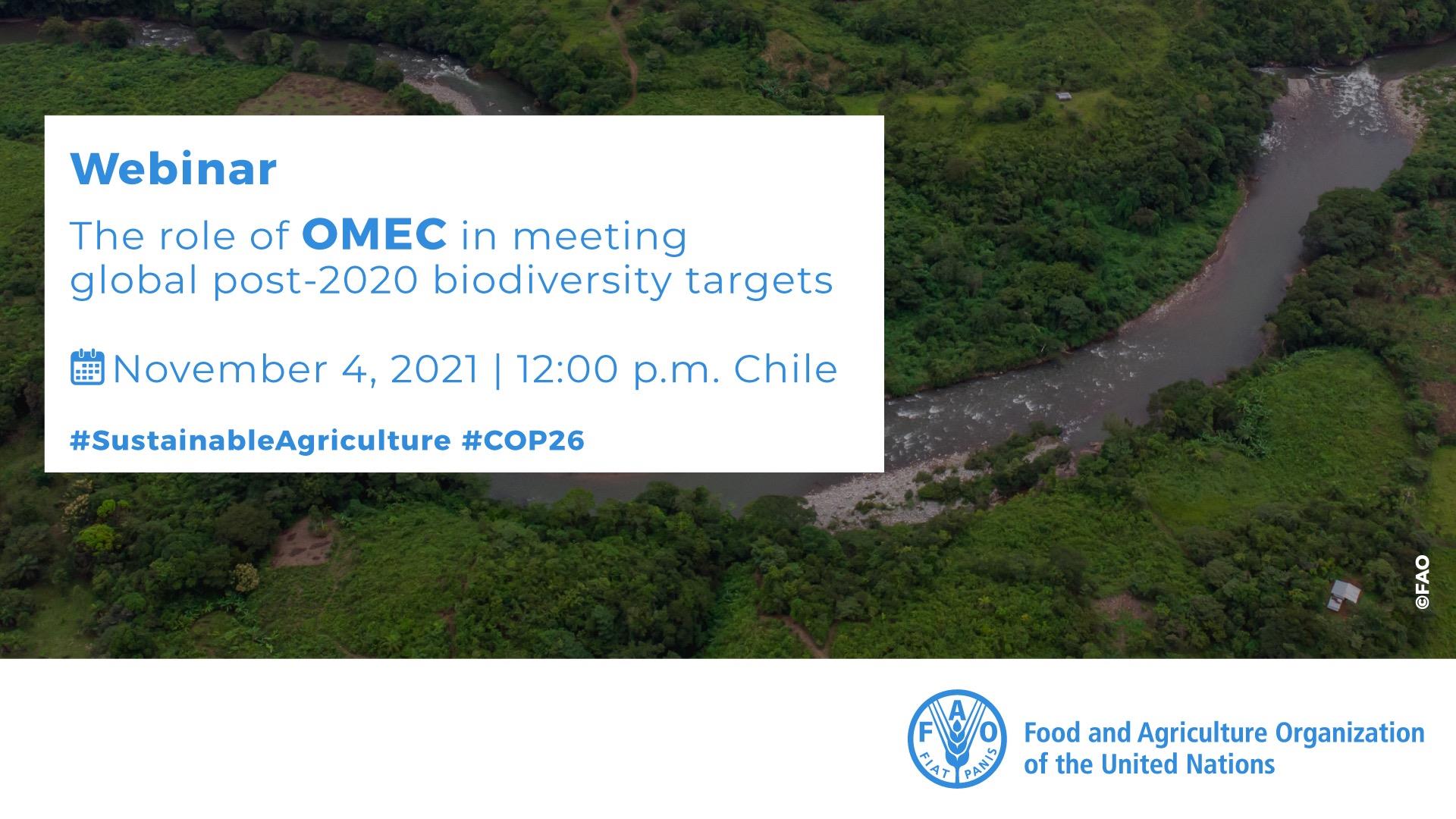The role of OMEC in meeting global post-2020 biodiversity targets
Hybrid Event, 04/11/2021

Simultaneous translation in Spanish and English.
Under the 2030 Agenda for Sustainable Development, which sets out a series of goals and targets to address a variety of global challenges, biodiversity and ecosystems figure prominently in many of the Sustainable Development Goals (SDGs) and associated targets. Biodiversity is a fundamental component of many economic activities, particularly those related to livestock and agriculture, forestry and fisheries. From it we obtain food, oxygen, clean water, energy, medicines, and many raw materials, as well as protection against pests, diseases and weather events, just to mention a few of the many goods and services it provides us with every day.
Nearly half of the world's population depends directly on natural resources for their livelihoods, and many of the world's most vulnerable people depend directly on biodiversity to meet their daily subsistence needs.
However, despite representing a fundamental axis for economic, social and cultural development, biodiversity is under severe threat, mainly due to human action. Population growth, the increase in excessive and unsustainable consumption, and the high demand for resources have destroyed habitats and endangered thousands of natural species.
As a result of some of these interventions, ecosystems have diminished their capacity to provide us with services. Habitat loss, the introduction of invasive species, overexploitation of resources, desertification, climate change and pollution are endangering natural life and therefore human life.
Latin America and the importance of the biodiversity
Latin America and the Caribbean is a particularly rich region in terms of biodiversity, with seven of the most biodiverse countries in the world, the region is home to 40% of global biodiversity (all species), and almost a quarter of the world's forest area.
It also has more than 8.8 million km2 located in terrestrial and marine protected areas, the largest number of such areas in the world, with a total area that is greater than the sum of the continental territories of Argentina, Mexico, Peru, Colombia, Bolivia and Paraguay, according to the Protected Planet 2020 report.
There is no doubt that this relative abundance of biodiversity represents one of the region's main comparative advantages. Latin American and Caribbean countries are among the most active and influential in international biodiversity negotiations and have developed a variety of sustainable biodiversity management responses. The region is contributing significantly to the construction of the new post-2020 Global Biodiversity Framework and has a wide range of replicable and scalable initiatives and experiences to contribute to its future implementation.
This is the context for the Biodiversity Dialogues. This series of three events aims to provide a meeting space for organizations, sectors, groups and individuals who are promoting concrete and positive actions in favor of the conservation and sustainable use of biodiversity.
At the same time, it seeks to be an instance of awareness that allows the dissemination of information and exchange of experiences, with a focus on the importance of biodiversity for livelihoods, local economies and food and nutritional security.
Aichi Target 11 (Strategic Plan for Biodiversity 2010-2020), seeks that by "2020 at least 17% of terrestrial, inland waters, and 10% of marine and coastal areas, especially those of particular importance for biodiversity and ecosystem services, are conserved through conservation of biodiversity and ecosystem services, have been conserved through effectively and equitably managed, ecologically representative and well-connected systems of protected areas and other effective area-based conservation measures (OMEC), and are integrated into the wider landscape and seascape".
OMECs are understood as: "a geographically delimited area that is not a protected area, which is managed in such a way as to achieve positive and long-term results for the in situ conservation of biodiversity, with associated ecosystem functions and services and, where appropriate, cultural, spiritual, socioeconomic, and other locally relevant values".
In the framework of COP 14, held in November 2018 in Sharm el Sheikh (Egypt), Decision 14/8 was adopted, which calls on the International Union for Conservation of Nature (IUCN) and the Food and Agriculture Organization of the United Nations (FAO) to continue to assist countries in identifying OMEC, and invites governments, relevant organizations and donors, to the best of their ability, to build capacity, including workshops that facilitate the application of the Guidance for recognizing and reporting OMEC.
Documents
Links
- Biodiversity
- FAO Biodiversity Mainstreaming Platform
- Global Biodiversity Framework
- Plan de acción Regional Biodiversidad (DRANIBA)
